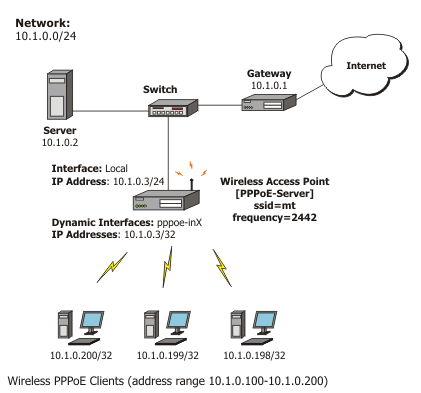

PPPoE Active Discovery Session Confirmation (PADS) - When the PADR is received, the Access Concentrator generates a unique session identification (ID) for the Point-to-Point Protocol (PPP) session and returns this ID to the PPPoE client in the PADS packet. If the initial PADI packet had a blank "service-name" field filed, the client populates the "service-name" field of the PADR packet with the first service name that had been returned in the PADO packet. The client may receive multiple PADO packets, but the client responds to the first valid PADO that the client received. This packet is sent to the unicast address of the Access Concentrator.

PPPoE provides the ability to connect a network of hosts over a simple bridging access device to a remote Access Concentrator.

It is advised not to use static IP addresses or DHCP on the same interfaces as PPPoE for obvious security reasons. PPPoE standard is defined in RFC 2516. The PPPoE client and server work over any Layer2 Ethernet level interface on the router, for example, Wireless, Ethernet, EoIP, etc. Generally speaking, PPPoE is used to hand out IP addresses to clients based on authentication by username (and also if required, by workstation) as opposed to workstation only authentication where static IP addresses or DHCP are used. Point to Point over Ethernet (PPPoE) is simply a method of encapsulating PPP packets into Ethernet frames. PPPoE is an extension of the standard Point to Point Protocol (PPP) and it the successor of PPPoA.


 0 kommentar(er)
0 kommentar(er)
